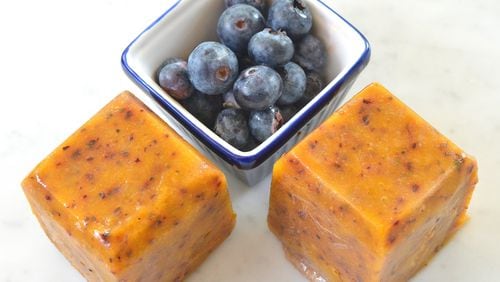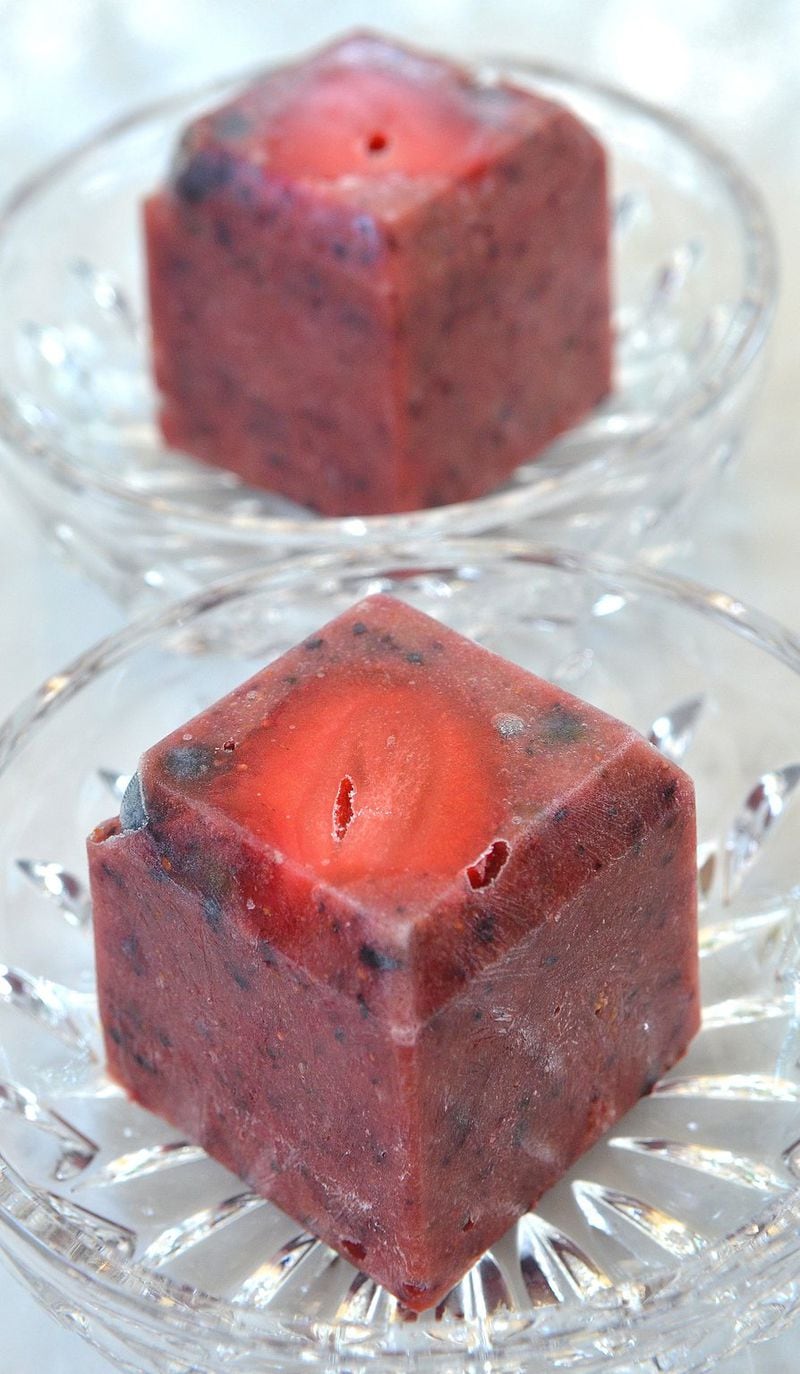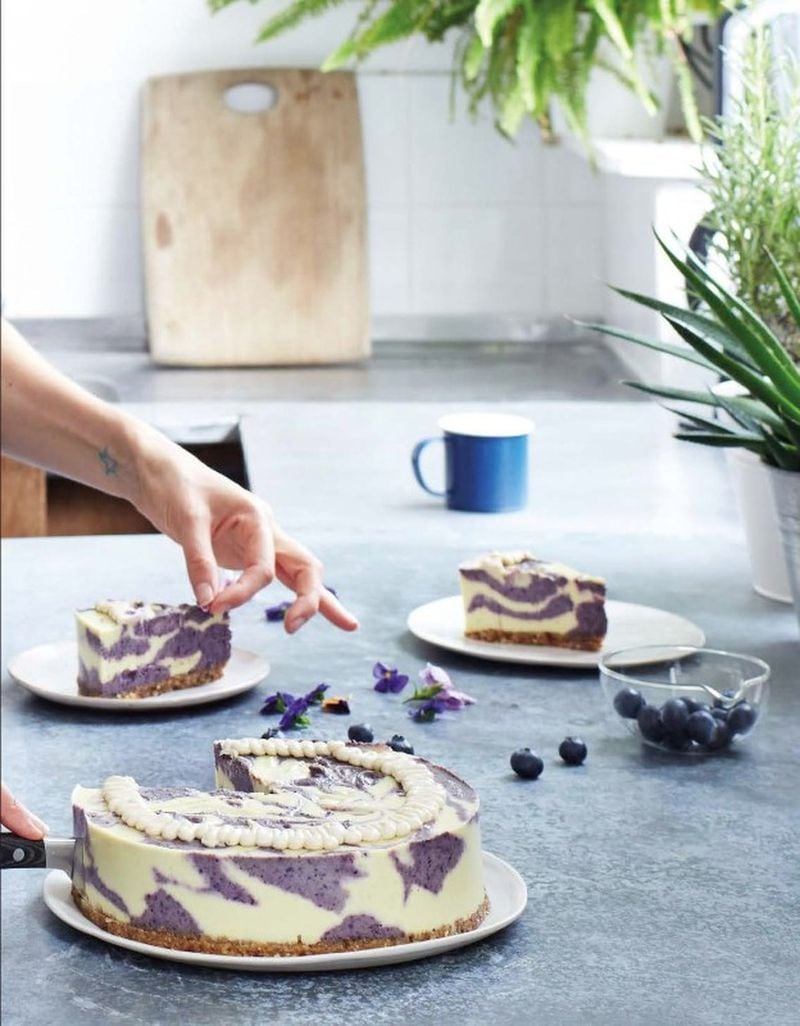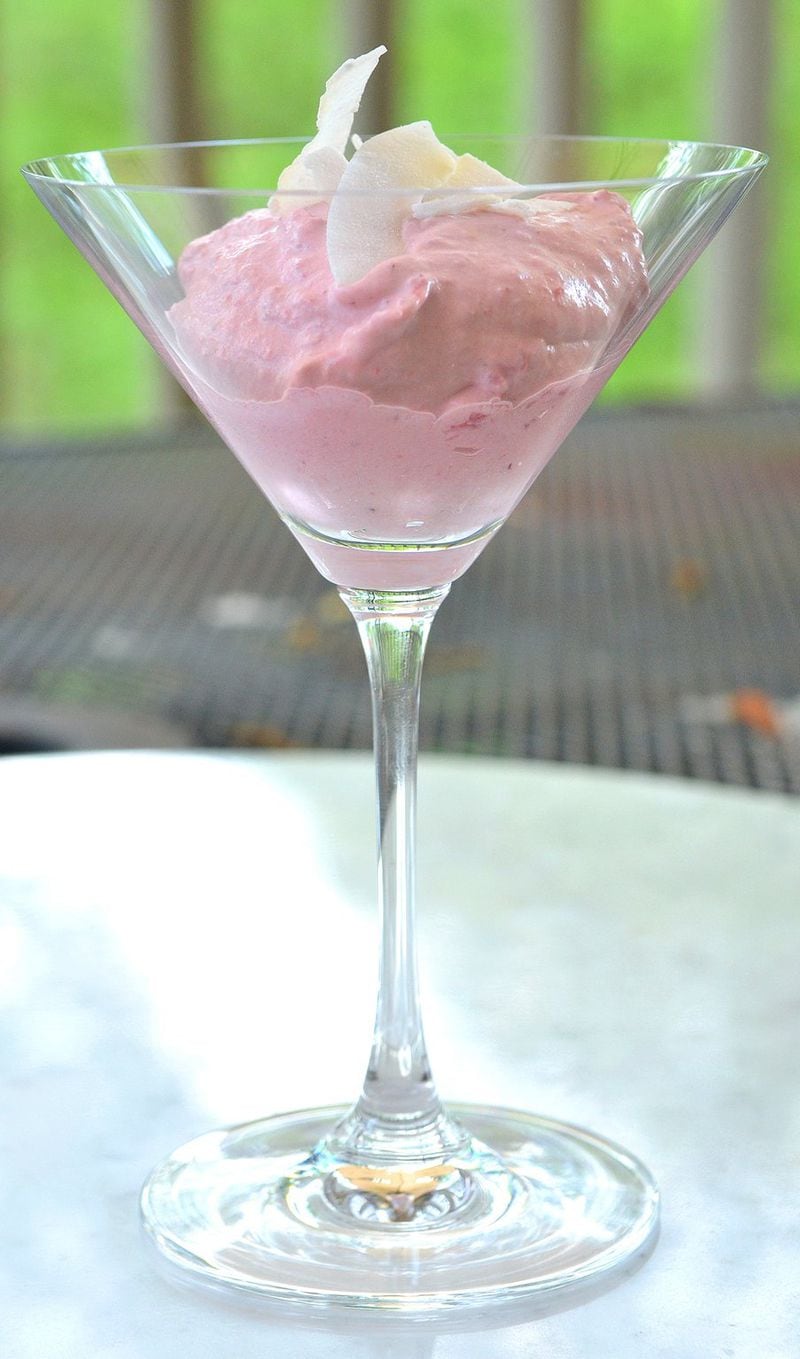There are certainties in life beyond death and taxes.
One is that May will bring local produce into focus at farmers markets across the region, where they will be teeming with strawberries, blueberries and later on, blackberries, and early peaches from South Georgia. Another is that once you’ve indulged in eating these local jewels out of hand for a week or so, you’re going to want to use them in a recipe or two.
For me, this usually means cranking up the heat in the oven and rolling up my sleeves for some berry pies and tarts, or pulling my canning supplies from the shelf to make preserves or pickled peaches. But proponents of the Raw Food Movement would suggest trying something new this season: keeping my fresh produce, well … fresh.
As a pastry chef, the idea of creating recipes without actually cooking anything not only intrigues me, but challenges as well. After all, understanding the science behind what happens when food is heated is one of the reasons I became a chef. Now these “raw foodists” are telling me not to bake at all?
It turns out raw foodists claim some science of their own: The movement strongly supports the idea that heating food beyond 120 degrees Fahrenheit (roughly 49 degrees Celsius) destroys valuable, natural enzymes and makes food less nutritious, a claim widely debated, especially among foodies, food scientists and the medical community. Cooking food is considered one of the greatest human inventions (because it made eating it easier, safer and less time-consuming for our ancestors), and since many foods — at least at one time or another — require heating and sometimes pasteurization for health and safety reasons (not to mention federal and state regulations), this is actually a pretty bold claim — and a difficult maxim to live by.
First, not everything in raw food recipes is so readily available (think chia seeds, maca powder and chaga), though most everything can either be found online or at local health food stores. And — perhaps most important — the move to raw is an adaptive process and lifestyle change, just like any alternative eating plan, especially for desserts. There are nut milks and date pastes to be made, and many items require resting overnight to achieve the proper texture.
“Raw food versus cooked food is always a hot topic,” said Mimi Kirk and Mia Kirk White, authors of “Raw-Vitalize: The Easy, 21-Day Raw Food Recharge” (Countryman Press, January 2017, $19.95). “Some studies say eat all raw and others say some foods should be cooked. We determined we feel more energetic and nourished eating all raw foods.” Kirk and Kirk White’s book is an easy foray into eating raw, where they explore veggies and fruits galore in recipes such as Sweet Potato Swirl and Overstuffed Portobello Mushrooms and offer meals that can mix and match into busy schedules.
But it wasn’t until “Raw Cake: Beautiful, Nutritious and Indulgent Raw Desserts, Treats, Smoothies and Elixirs” (St. Martin’s Griffin, March 2017, $19.99) came across my desk that I knew I had to actually delve into raw recipes once and for all. The gorgeous photos of desserts and (mostly) frozen treats (freezing is big in raw desserts) had me hooked.
Authors Daisy Kristiansen and Leah Garwood-Gowers, of raw dessert and cake haven the Hardihood in London, met while modeling in the fashion industry, but soon found they both had a love of all things coconut and avocado in their mutual search for an all-natural diet. The book goes from super easy to semi-complicated, with a good glossary of go-to items such as nuts, coconut oil, dates, rice malt and powdered “super” foods (like that chaga) as reference points for novice raw foodies. There are even styling and decorating techniques.
“The book was a really visual project for us,” the authors told me via email. “It’s hugely important to us that it embodied the look and feel of the Hardihood. We wanted it to be as beautiful as a coffee-table book with recipes that you couldn’t wait to make.” In that, they certainly succeeded.
Exploring its pages, it became clear that certain ingredients were necessities in the raw realm. Just as I would arm myself with egg whites, butter and the specificities of method for traditional cakes, the Hardihood ladies had their larder of ingredient/method weaponry, too: Avocados are used as textural agents in everything from ganache to smoothies; homemade nut milks and pastes are the building blocks of many recipes; coconut cream is often a substitute for its dairy counterpart; and dehydrators, blenders and food processors are must-haves over my countertop KitchenAid and ubiquitous bain-marie.
By the time I had perused both books, I had an abundance of fresh fruit in the fridge and a lot of frozen fruit bites. The “Raw Cake” “cheesecake” chapter — the “crowning glory of raw desserts and the holy grail for those who make them” – proved too daunting for this overworked pastry chef; while the methodology is simple (process the ingredients in a food processor, then fill a springform pan), the list of ingredients was long and costly. I decided to make the effort of creating Ginger Chai Latte Cheesecake and Toffee Cacao Cheesecake for some future special occasion. Of course, there’s no cheese here, or toffee for that matter. Just raw things made to taste like them. They don’t, for the most part, but that doesn’t mean they don’t taste good.
In defense of raw desserts, I’d have to say I love the idea of occasionally eating something super fresh with so little sugar. And that’s easy and fun to do, for the most part. But to re-create some of the more complicated recipes, be prepared to redo your pantry with a lot of new ingredients that will be easiest for you to find online.
“It can be expensive and the ingredients aren’t the sort you can find in every shop,” Kristiansen and Garwood-Gowers admitted, “but these days the Internet is your best friend. You could order all of the ingredients from Amazon and have them delivered the next morning. A lot of the recipes are made using the same basic ingredients, and once you’ve invested in them, they have a nice, long shelf life so you can keep coming back to them as you wish.” The challenge is fun, and the results are (mostly) worth the effort.
Still, there’s nothing quite like the beauty, warmth and yes — baking science — behind a warm berry tart. Even Kristiansen and Garwood-Gowers agree, and it’s their “this works for us but it might not work for you” attitude that makes the book — and raw desserts — an ultimately winning endeavor.
“We love sponge cake; there’s something so simple about it. It always stands out to us in a bakery; we’re always looking for ways to make raw pastry feel lighter and fluffier,” they said. “The day we create a raw croissant … that’ll be a real ‘call mum’ moment!”
Frozen Fruit Bites
Inspired by the book “Raw-Vitalize” (Countryman Press, January 2017) by Mimi Kirk and Mia Kirk White, these icy treats can be made with just about any fruit. The cubes are big enough to serve as dessert, but small enough for a between-meal snack.
Blueberry Lemon Swirl Cheesecake
Featured in “Raw Cake: Beautiful, Nutritious and Indulgent Raw Desserts, Treats, Smoothies and Elixirs” by Daisy Kristiansen and Leah Garwood-Gowers (St. Martin’s Griffin, March 2017), this “cheesecake” features characteristic swirls of blueberry.
Strawberry Angel Whip
From “Raw Cake,” this is the “non-powdered, natural sister of a packaged instant pudding that was a household favorite in 1970s England. If you weren’t lucky enough to have Angel Delight the first time round, this will more than show you what you missed.”
MORE RAW DESSERTS
If you're looking for raw desserts (and other raw goodies) in Atlanta, try the raw, vegan specialties at Tassili's Raw Reality Café in the West End, created by master raw food "alchemist" Tassili Ma'at, whose kale wraps are renowned in the raw food community. Tassili's Raw Reality Café, 1059 Ralph David Abernathy Blvd., Atlanta. 404-480-0364, tassilisrawreality.com.
About the Author






/cloudfront-us-east-1.images.arcpublishing.com/ajc/P7DYBH6TO7FEKG4SUXQQKADRXE.jpg)


